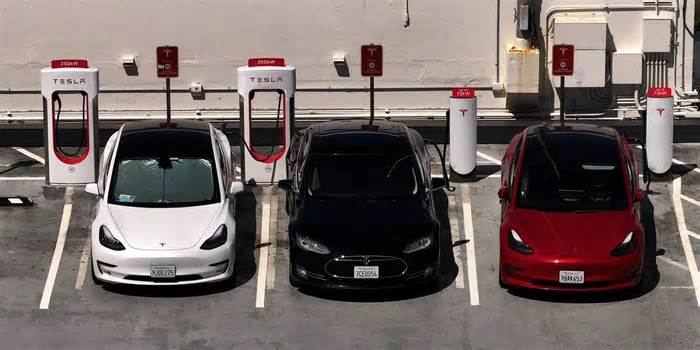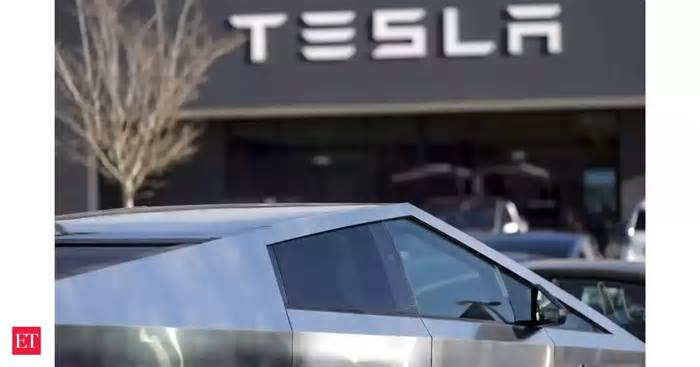
Supercharging My Tesla Model Y Cost More Than I Expected, So I’m Wondering If This Is Normal
- by Torque News
- Jun 30, 2025
- 0 Comments
- 0 Likes Flag 0 Of 5

Advertising
For a car that’s supposed to save you money on fuel, small costs can start to add up when you're relying on supercharging. This was the case for one Tesla owner whose low-mileage lifestyle didn’t stop him from racking up a triple-digit Supercharging bill. While scrolling through the “Tesla Model Y” Facebook group this afternoon, I came across a post from Luca Escobedo that perfectly captured this unexpected reality.
In Luca’s own words: “June isn’t over yet and I've spent $123 on Supercharging. Am I doing something wrong? I have a 2021 Tesla Model Y Performance. I ‘feel’ like I don’t drive a lot considering I work from home and my girlfriend drives about 0.3 miles from home when she is at work. I have Sentry Mode on all day though. Does that really take that much of a toll on my battery? Not complaining but just wondering if any of you have the same experience with charging costs.”
When Supercharging Becomes the Default
Tesla owners often hear that charging at home is the best-case scenario. And when it isn’t available, like in Luca’s case where home charging wasn’t an option, supercharging becomes the norm. But as convenient as Tesla’s Supercharger network is, it can come with costs that add up quickly if you rely on it exclusively.
Luca’s situation isn’t rare. Many urban Tesla owners live in apartments or condos where installing a wall charger isn’t possible. Without access to Level 1 or Level 2 charging, they depend solely on DC fast charging, which was never meant to be a daily solution. Those chargers are mostly designed for convenience and speed and not necessarily long-term affordability or battery health.
It also raises questions about background battery usage. Sentry Mode, while offering security and peace of mind, is known for its drain. It keeps cameras rolling, sensors awake, and the car in a semi-wake state 24/7. Over the course of a month, it can quietly siphon off enough energy to require more frequent charging than one would expect, especially for drivers who otherwise don’t rack up many miles.
This conversation brings to mind the concerns highlighted in another case, where an owner felt forced into selling their Tesla Model Y due to outrageous registration fees. In both cases, it’s not that the car itself failed to deliver on performance, but that ownership costs started to outweigh the perceived value.
What Other Tesla Owners Had to Say
Luca’s post drew in plenty of responses, each offering a different perspective. One of the most striking came from Kyle Cooper, who challenged the common advice to "just charge at home."
“Crazy how everyone says charge at home. My house is 12 cents per kWh. They charge me about the same in taxes and fees. My cost averages around 24 cents and the Super Charger only costs 26 cents on off time and 35 during peak hours. I don't see a big cost savings at all,” Kyle wrote.
His point is a good reminder that not all home charging is cheap. Depending on your local utility structure or grid fees, charging at home may not always deliver the savings people expect. This could prove true in states with tiered pricing or older homes with outdated infrastructure.
Regina Mackiewicz shared her own complications around home charging: “Before I can get a home charger installed I have to upgrade my breaker box. My house is 50+ years old. $2k plus the cost of the charger and then charging overnight discount. At the moment I have a few ‘free’ slow chargers in my area. I plan grocery trips around charging to get the 10% range.”
Her story sheds light on a less discussed issue: not all homes are ready for EVs. The costs of upgrading outdated electrical systems can be a barrier for first-time EV owners who may have underestimated installation expenses. In those moments, public chargers serve as strategic stopgaps.
Then there’s Jeily Russo, who has a relatively frictionless setup and noticed a slight uptick in her electric bill: “I believe my electric went up about $35 a month since we installed the home charging station.”
Compared to Luca’s $123 Supercharging bill, Jeily’s $35 increase is relatively on the milder side. Now it wasn't mentioned how much driving Jeily got out of that $35, but for a fully electric vehicle used regularly, that kind of monthly bump is actually a testament to how economical home charging can be. It’s a subtle but clear win for those with a stable setup, and a good reminder that not all charging solutions are created equal.
How Luca Responded to the Advice
Advertising
After reading through the comments and suggestions from fellow Tesla owners, Luca decided to take action. In a follow-up post, he shared: "Thank you all for the info! I see that charging at home would bring out the benefits of having a Tesla. Will be renting a garage with a wall outlet at my apartment for $100 a month!"
It’s a move that seems counterintuitive at first glance. Why pay $100 each month just to charge at home? But the logic becomes clearer when you consider that a lot of apartment complexes don't actually charge for the electricity in the garage (at least not where I used to live.) This can drop the monthly charging cost and give him basically an infinite range for a stable price. Not to mention the added peace of mind and battery longevity.
Even when electricity costs are calculated in garage cost uses, the Tesla becomes better value when it's used the way it was designed to be used: paired with overnight and low-stress home charging.
Why This Isn’t Just a Luca Problem
The reality is that Tesla ownership varies wildly depending on your charging situation. This is why prospective buyers who live in apartments or urban centers often overlook or underestimate what charging logistics will look like.
Please first to comment
Related Post
Stay Connected
Tweets by elonmuskTo get the latest tweets please make sure you are logged in on X on this browser.






 Energy
Energy


















